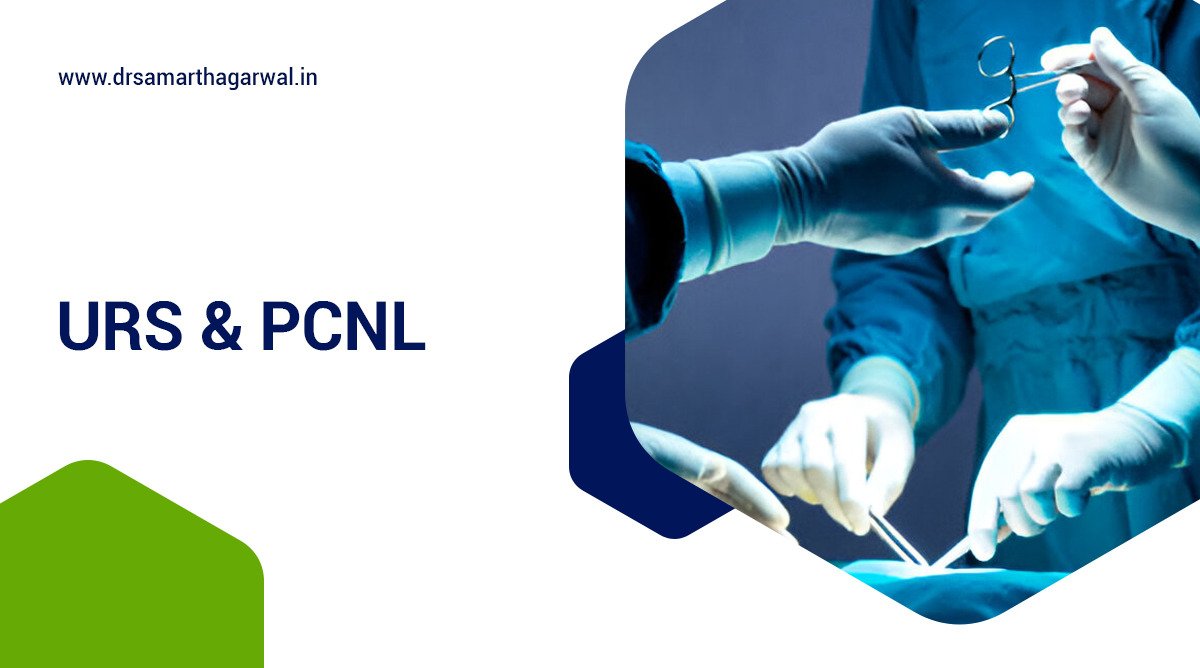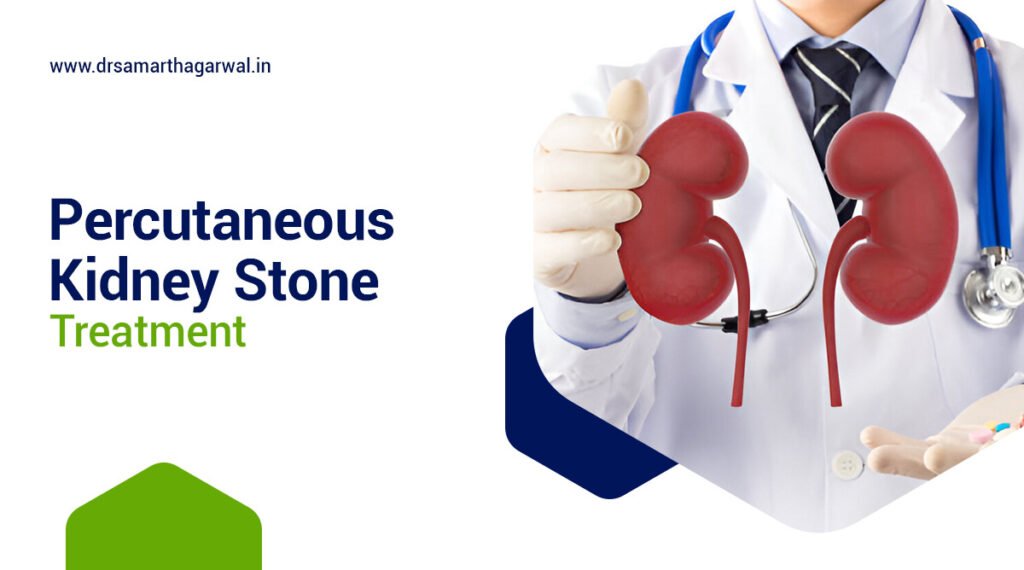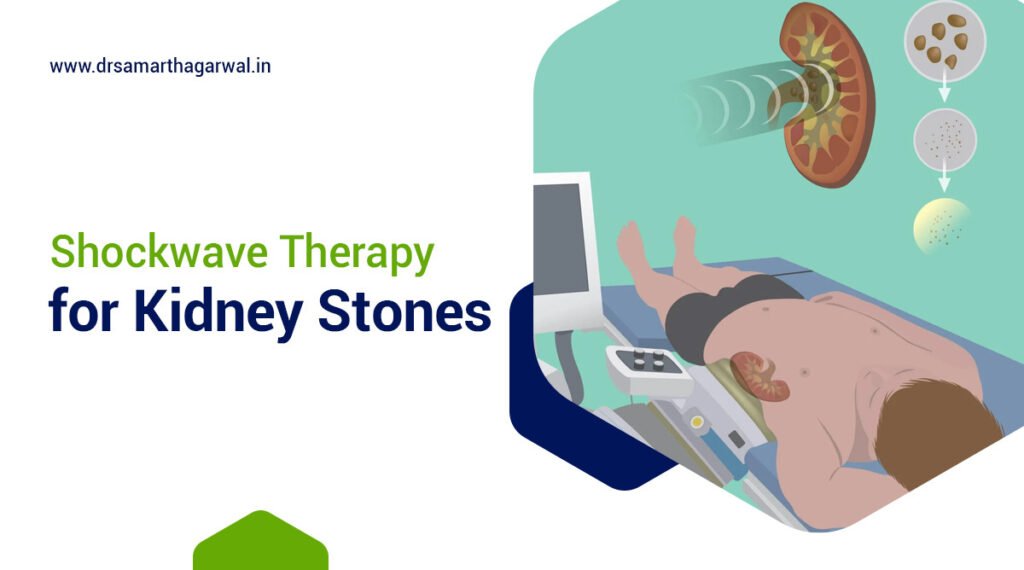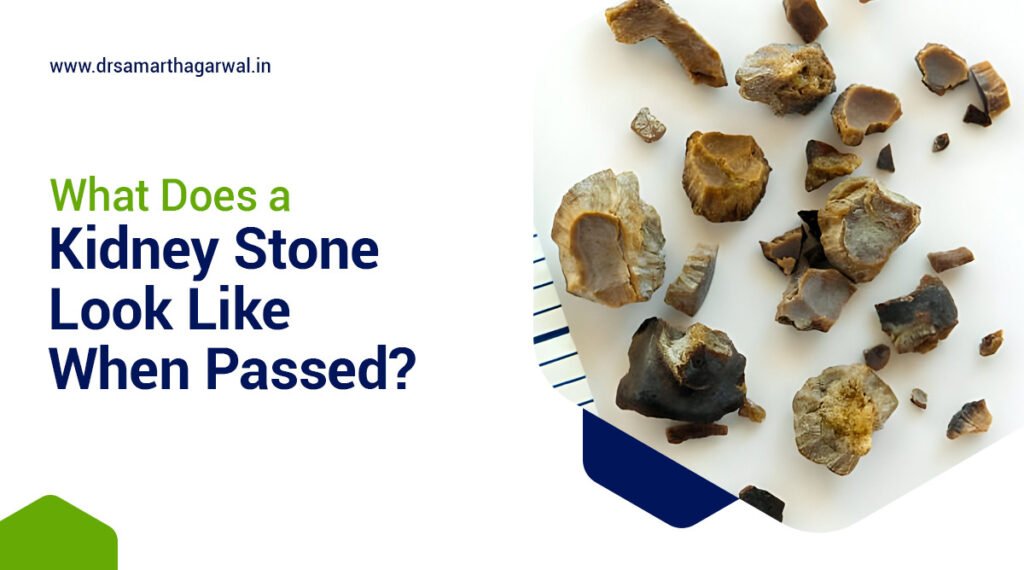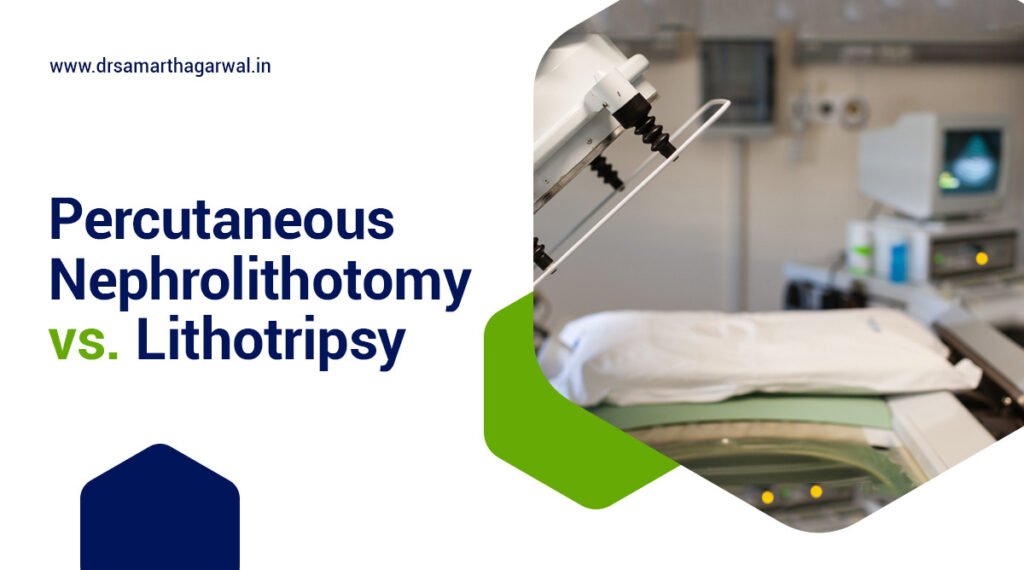Kidney stones can be a painful and frustrating experience, but modern urology offers effective solutions like Ureteroscopy (URS) and Percutaneous Nephrolithotomy (PCNL).
Both procedures are designed to help patients eliminate these stones, but they differ significantly in their approach and application.
This article explores what URS and PCNL entail, how they are performed, their indications, risks, benefits, and recovery processes. Understanding these treatments can empower patients to make informed choices about kidney stone management.
What are URS and PCNL?
Ureteroscopy (URS) and percutaneous nephrolithotomy (PCNL) are significant surgical modalities in the management of nephrolithiasis, particularly for patients suffering from upper ureter stones. These minimally invasive techniques are crucial for treating ureteral calculi and improving patient outcomes while minimizing complications. Both procedures have evolved considerably through randomized controlled trials and studies conducted by the European Association of Urology, highlighting their efficacy and role in contemporary urological practice.
How are URS and PCNL Performed?
The performance of ureteroscopy (URS) and percutaneous nephrolithotomy (PCNL) involves distinct procedures tailored to effectively address the specific characteristics of kidney stones, such as stone size and location. URS typically employs endoscopic techniques allowing the surgeon to access the urinary tract directly, while PCNL involves creating a small incision in the skin to remove larger stones through the kidney. Both methods prioritize stone-free rates and aim to reduce overall complications, operative time, and healthcare costs.
What is the Difference Between URS and PCNL?
URS and PCNL are both effective surgical techniques for treating kidney stones, but they differ significantly in their approach and suitability based on factors such as stone size and location. URS is less invasive, typically recommended for smaller stones in the upper ureter, while PCNL is preferred for larger stones requiring a more extensive surgical approach. Understanding these differences is essential for optimizing clinical outcomes and minimizing the complications rate.
When considering stone size, URS is generally indicated for stones measuring less than 2 cm, especially those lodged in the upper urinary tract. In contrast, PCNL is more suitable for stones larger than 2 cm, particularly those located in the kidney. Laparoscopic ureterolithotomy and shockwave lithotripsy are also among the surgical modalities utilized depending on specific patient factors and stone burden.
The recovery time also varies between the two procedures, with aspects like length of hospital stay and follow-up appointment scheduling being influenced by the complexity of the surgery and stone size:
- URS: Typically allows for a quicker recovery, usually within 1-2 days, enabling patients to resume normal activities sooner.
- PCNL: Generally demands a longer recovery period, often ranging from 3 to 5 days, due to its more invasive nature.
In terms of complications, both methods have associated risks, but PCNL carries a higher potential for complications such as bleeding or infection. Discharge criteria often involve pain management, the absence of fever, and the ability to void satisfactorily.
What Are the Indications for URS and PCNL?
Indications for URS and PCNL encompass a range of treatment options tailored to address specific patient conditions, particularly those related to nephrolithiasis and the presence of ureteral calculi. Factors influencing the choice between these surgical modalities include stone size, location, and the patient’s overall health status, which can significantly impact clinical outcomes and recovery. Additionally, understanding the guidelines set forth by the European Association of Urology is essential for optimal patient selection.
When is URS Preferred?
Ureteroscopy (URS) is preferred in cases where upper ureter stones are smaller than 2 cm and when minimally invasive treatment is necessary to preserve renal function. This technique is particularly advantageous due to its ability to provide high confidence ratings in achieving stone-free rates and is associated with fewer complications compared to more invasive procedures.
In clinical practice, ureteroscopy shines when dealing with specific anatomical challenges, such as strictures or unusual stone locations that complicate traditional approaches, often assessed through initial stone-free rate and final stone-free rate analysis. Factors such as the patient’s overall health, prior surgical history, stone composition, and the initial stone-free rate significantly influence the decision-making process. For instance:
- Patients with a history of bleeding disorders might find URS safer due to its minimally invasive nature
- Individuals exhibiting renal impairment may benefit from URS as it reduces potential damage associated with larger surgeries
- Certain patients may also prefer URS given that it often results in shorter recovery times and less post-operative pain
By prioritizing both clinical scenarios and the unique characteristics of each patient, healthcare providers can tailor their approach effectively.
When is PCNL Preferred?
Percutaneous nephrolithotomy (PCNL) is preferred for larger kidney stones, particularly those exceeding 2 cm in size, where other treatment modalities have failed or are not feasible.
This method is especially beneficial in scenarios where patients present with anatomical complexities, such as severe obesity or prior surgeries that have altered the kidney’s location, making traditional approaches less effective.
In cases involving staghorn calculi, the extended surface area necessitates a more aggressive intervention like PCNL to ensure complete stone clearance. While the invasiveness of this technique can lead to some postoperative challenges, including bleeding or infection, the overall advantages often outweigh these risks.
- Recovery time may extend to several weeks, particularly when larger stones are involved.
- Patients typically experience varying levels of discomfort postoperatively, but many find relief through appropriate pain management strategies.
Understanding these implications, alongside statistical analysis and risk of bias assessment from randomized studies, can aid in making informed decisions about the ideal treatment pathway.
What Are the Risks of URS and PCNL?
Understanding the risks associated with URS and PCNL is critical for both patients and healthcare providers, as these procedures, while effective, can lead to various complications. Risks may include bleeding, infection, and injury to surrounding organs, all of which necessitate careful monitoring and management during recovery. Awareness of these potential complications is essential for informed patient consent and treatment planning.
What are the Common Complications of URS?
Common complications of ureteroscopy (URS) include urinary tract infections, stone fragment retention, and ureteral injury, which can significantly affect recovery time and overall patient satisfaction. These issues are often evaluated through a thorough literature search and surgical techniques review. It is crucial for surgeons to address these complications proactively to ensure favorable clinical outcomes.
For minimize risk, understanding the incidence rates of these complications is essential. For example, studies indicate that urinary tract infections occur in approximately 5% to 10% of patients undergoing URS, while stone fragment retention has an incidence of about 3% to 20%. Ureteral injuries, though less common, can have serious consequences, making effective management strategies critical.
- Urinary Tract Infections: Management typically includes antibiotic therapy, and timely intervention is vital for patient recovery.
- Stone Fragment Retention: This may necessitate a second procedure for complete clearance, emphasizing the need for thorough preoperative imaging.
- Ureteral Injury: If it occurs, immediate recognition and repair are vital to prevent long-term complications.
The importance of a meticulous preoperative work-up combined with comprehensive patient education cannot be overstated. Providing clear information on potential risks and signs to watch for postoperatively empowers patients and can lead to quicker responses to complications, enhancing the preoperative work-up and discharge criteria processes.
What are the Common Complications of PCNL?
Percutaneous nephrolithotomy (PCNL) carries its own set of complications, including hemorrhage, injury to adjacent organs, and postoperative pain, which can be evaluated using the Clavien-Dindo scale to assess severity and patient factors.
Understanding these potential risks is crucial for both patients and healthcare providers. Complications can range in severity, with minor issues categorized as Grade I, such as nausea or fever, to more serious events classified as Grade IV, including organ dysfunction requiring intervention. This stratification helps in tailoring postoperative care and explains why specific follow-up appointments are essential.
- For instance, if a patient experiences a Grade II complication, involving a need for additional medication, they may require closer monitoring for potential escalation.
- Addressing pain management is vital, emphasizing the need for effective communication between healthcare providers and patients, and understanding quality of evidence and study eligibility criteria.
- Ultimately, regular follow-up appointments facilitate the identification of complications early, ensuring that necessary interventions are promptly administered.
This proactive approach not only enhances recovery but also mitigates the risk of severe outcomes, reinforcing the importance of adherence to recommended follow-up protocols.
What Are the Benefits of URS and PCNL?
The benefits of both ureteroscopy (URS) and percutaneous nephrolithotomy (PCNL) are significant, primarily focusing on effectively achieving high stone-free rates and minimizing the risk of recurrent nephrolithiasis. These procedures improve clinical outcomes, enhance patient quality of life, and reduce the overall burden of surgery on healthcare systems.
How Does URS Compare to Other Treatments for Kidney Stones?
When comparing URS to other treatments for kidney stones, such as shockwave lithotripsy, URS offers distinct advantages, particularly in terms of stone retrieval and lower complication rates. Unlike shockwave lithotripsy, which relies on non-invasive techniques, URS allows for direct access to the stone, leading to improved clinical outcomes, especially in upper ureter stones. Additionally, endoscopic surgery techniques have enhanced the process.
This direct approach not only enhances the probability of complete stone removal but also reduces the chances of residual fragments that can necessitate further interventions.
- In terms of stone-free rates, URS typically achieves higher success rates compared to alternative methods, making it a preferred choice for larger or complex stones, as supported by randomised controlled trials and network meta-analysis.
- It is essential to consider that the recovery time associated with URS can be longer than for non-invasive options, which may result in a trade-off where patients need to balance efficacy and post-procedure healing.
- Overall complications remain relatively low, with the likelihood of serious adverse events being less frequent than with some surgical options, as categorized by the Clavien-Dindo scale.
Therefore, the choice between these treatments ultimately depends on individual patient circumstances, stone characteristics, surgeon factors, and desired outcomes.
How Does PCNL Compare to Other Treatments for Kidney Stones?
PCNL is often compared to other kidney stone treatments, such as URS and shockwave lithotripsy, with its effectiveness being particularly pronounced in cases of larger stones, where it demonstrates superior stone-free rates despite a potentially higher complications rate.
When considering the various treatment modalities, it’s essential to explore not only the immediate outcomes but also the recovery time, duration of surgery, and overall healthcare costs associated with each option.
PCNL provides a swift resolution for patients suffering from substantial kidney stones, often resulting in shorter hospital stays. In comparison, procedures like URS may take longer for patients to achieve relief, as both recovery time and the potential for repeat treatments can extend overall healthcare costs. Surgeon factors and anatomical factors often play a role in these outcomes.
Understanding these factors can significantly influence clinical decision-making, particularly when weighing the benefits of immediate versus long-term health implications for the patient.
- Effectiveness in treating larger stones
- Recovery time considerations
- Impact on healthcare costs
As practitioners evaluate treatment options, these insights can guide them towards choosing the most appropriate approach for their patients’ unique situations, often considering data extraction from previous studies in endourology.
What is the Recovery Process for URS and PCNL?
The recovery process for patients undergoing ureteroscopy (URS) and percutaneous nephrolithotomy (PCNL) varies significantly, with each procedure having distinct postoperative care requirements and expected recovery times. Understanding these differences, including the management of postoperative complications, is crucial for ensuring optimal patient outcomes and adherence to discharge criteria.
How Long is the Hospital Stay for URS and PCNL?
The length of hospital stay for patients undergoing URS is typically shorter compared to those undergoing PCNL due to the minimally invasive nature of ureteroscopy, allowing for quicker recovery times and earlier discharge. Understanding these differences is critical for effective patient management and discharge planning.
In general, the average duration for a hospital stay following ureteroscopy (URS) ranges from 1 to 2 days, while those undergoing percutaneous nephrolithotomy (PCNL) may expect to stay anywhere from 2 to 4 days, contingent upon their individual circumstances and any potential complications.
- For URS patients, the criteria for discharge often include stable vital signs, the ability to tolerate oral intake, and manageable pain levels.
- In contrast, PCNL patients typically need to demonstrate controlled postoperative pain management, normalized kidney function, and a clear recovery plan arranged with their healthcare provider.
Both procedures, seen as auxiliary treatments to prevent further complications, necessitate follow-up appointments, which are essential for monitoring recovery and ensuring long-term success in preventing stone recurrence.
What is the Post-operative Care for URS and PCNL?
Post-operative care is essential for both URS and PCNL to ensure successful recovery and minimize complications; this may involve pain management, monitoring for signs of infection, and adherence to follow-up appointments. The approach to post-operative care can vary significantly between the two procedures due to differing recovery timelines and complications, as outlined by the European Association of Urology.
The significance of robust post-operative protocols cannot be overstated, as they lay the groundwork for a smooth healing process. After either procedure, patients should be vigilant about pain management, which often includes prescribed medications and may also involve non-pharmacologic strategies such as heat application or relaxation techniques.
- Monitoring for complications is critical. Signs of infection, such as fever or increased pain, should be reported immediately.
- Regular follow-up appointments are necessary to assess kidney function and ensure any potential issues are addressed promptly.
- Hydration plays an important role in the recovery process; therefore, patients are encouraged to drink plenty of fluids unless otherwise directed.
This comprehensive management approach not only promotes faster recovery but also enhances overall clinical outcomes, making it a vital part of patient care.

If you have any questions or concerns about your urinary health, including URS (Ureteroscopy) and PCNL (Percutaneous Nephrolithotomy) procedures, don’t hesitate to contact Dr. Samarth Agarwal!


